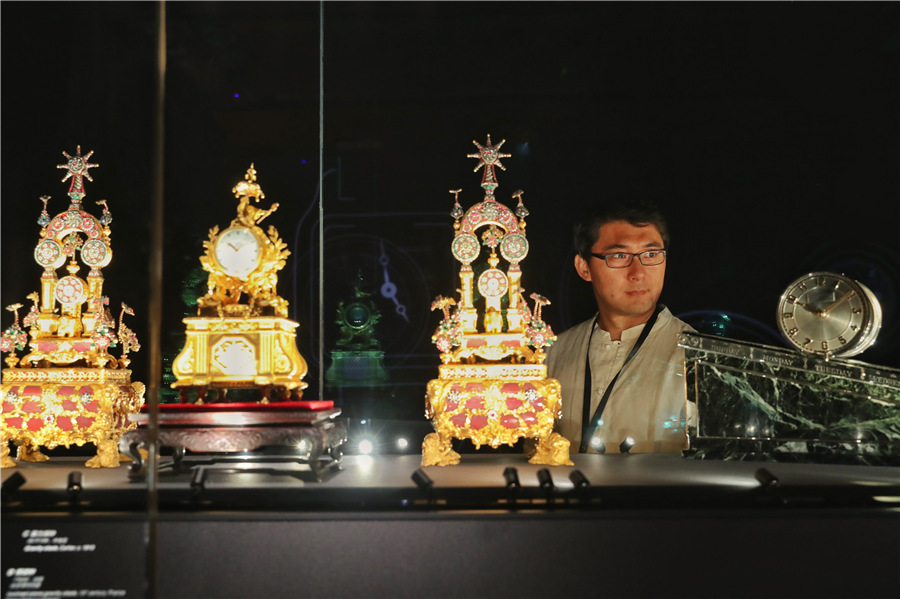Turning back the clock
 0 Comment(s)
0 Comment(s) Print
Print E-mail China Daily, June 4, 2019
E-mail China Daily, June 4, 2019

According to Rainero, a passion for Chinese culture became a trend in the West during the 1920s, and fashion brands were quick to respond to the ever-growing demand. Chinese aesthetics and motifs influenced not only the design of jewelry sets, watches and clocks, but also the workmanship of specific materials, nourishing an entire process of creation.
That period is also reflected in the section Chinese Inspirations at the exhibition through artifacts made of typical materials and patterns rooted in the traditions of Chinese culture.
For instance, the Carp clock from 1925 was made of a piece of carved ancient jade depicting two fishes swimming in the waves. Carp is appreciated for its courage and tenacity in Chinese culture, allowing it to swim upstream and change into a dragon.
Elements of Chinese culture seems to be ubiquitous in European upper-class life during this era, which are reflected in a range of exhibits, from a lacquer bridge case that was once owned by the well-known Rothschild family, to a platinum brooch and a vanity case featuring dragon motifs.
As China continues to develop rapidly both economically and culturally, Vigneron says he believes that it is important to remind people of their own traditions through familiar artifacts.
3494039f-f533-4953-9748-efa38ace4487.jpeg)




Go to Forum >>0 Comment(s)